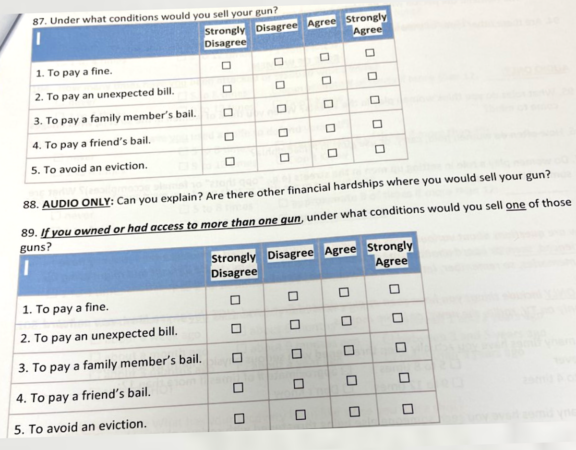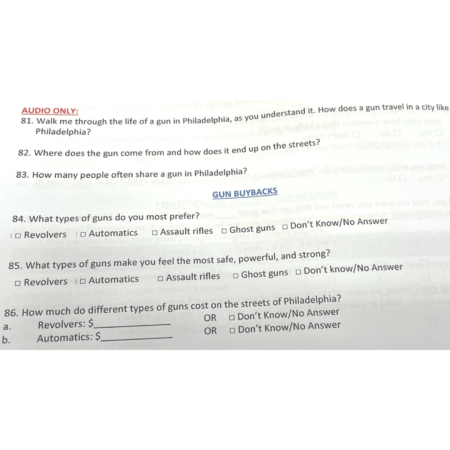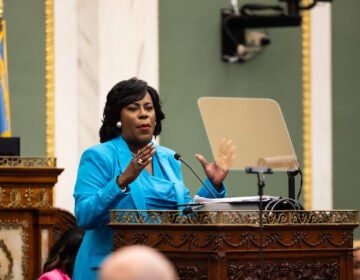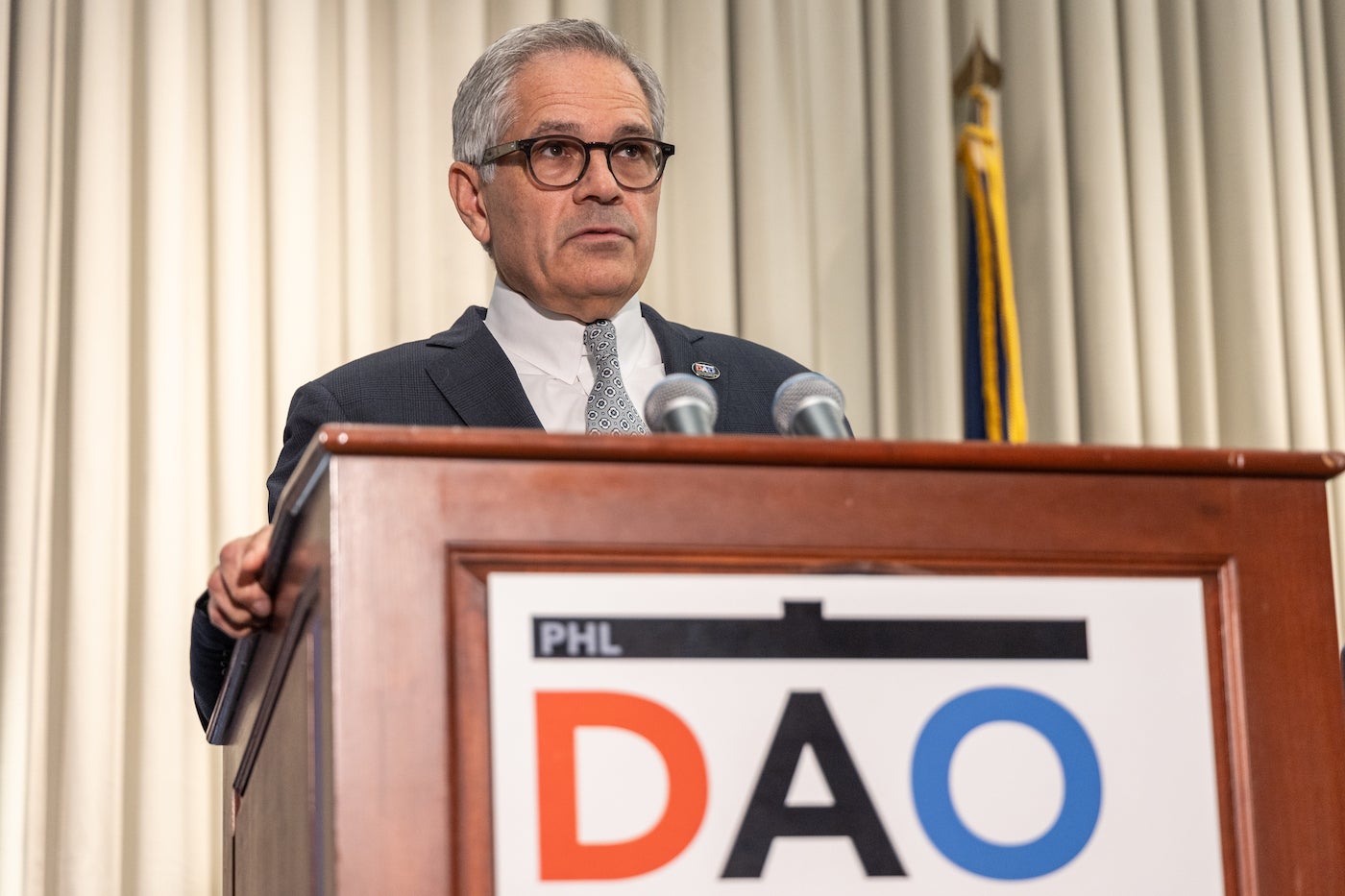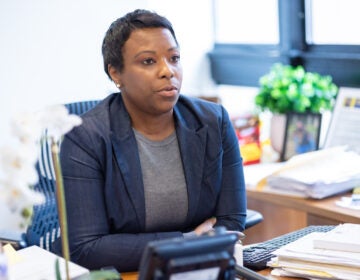Are gun buyback programs worth it? The answer is complicated
Gun buyback programs don’t do much for city violence but can be helpful in other ways. Is there a way to change them to be more effective?
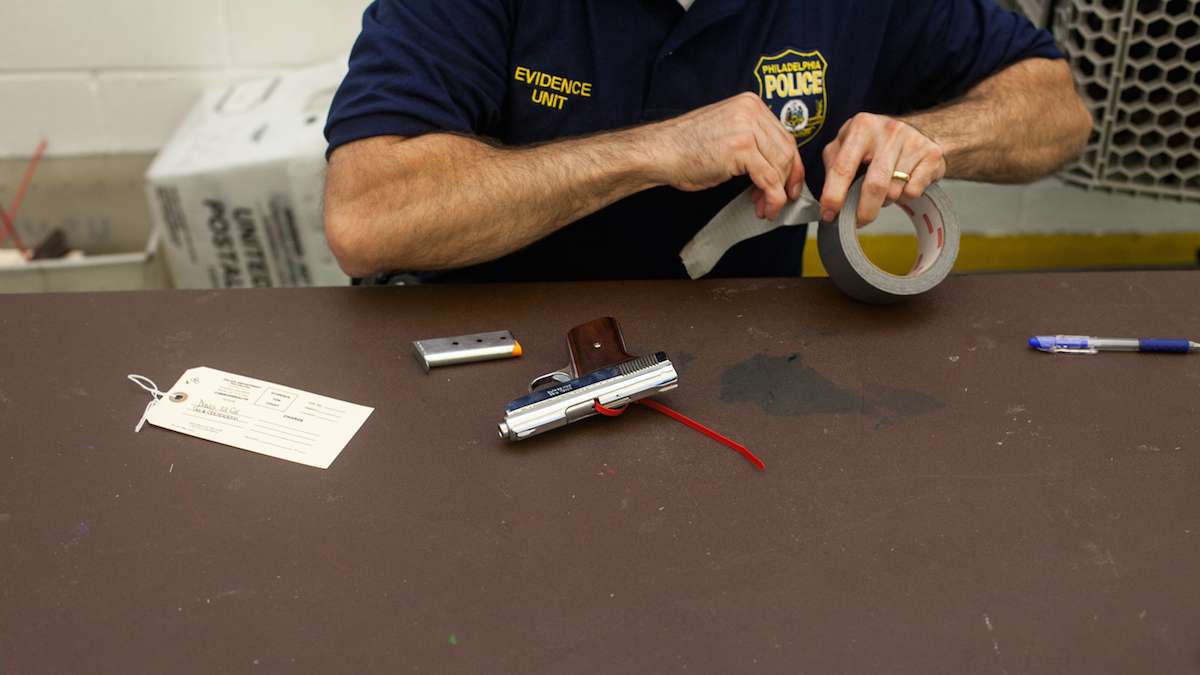
A handgun is outfitted with a gun lock at buyback event in West Oak Lane. (Brad Larrison for WHYY)
Buyback programs have been around for decades. The public can turn in guns, no questions asked, and are usually rewarded with gift cards or cash. They aren’t without controversy, and while the city of Philadelphia promotes them, it does not support them financially. The money comes from private donors or organizations. The activists who run them insist that they help in the fight against ongoing violence. They argue that any gun surrendered to responsible hands is a step forward; after all, some of those guns could be stolen and used for crime. Last year, 362 guns were stolen out of Philadelphia cars alone.
The data on city gun violence and gun buybacks is clear – there is little to no effect on diminishing city gun crime. Gun buybacks, as they are now, are best used to prevent accidental shootings, suicides, domestic violence, and, as previously mentioned, theft.
Without a way to track lost and stolen guns, could gun buybacks give law enforcement an edge? Is that enough? Is there any way to make these programs better?
Dr. Jonathan Wilson Jr. is a gun violence survivor and founder of the Fathership Foundation. In a recently recirculated op-ed in the Philadelphia Inquirer, he wrote that the current $100-200 offered in buybacks isn’t enough – black market prices for basic guns tend to start around $350 and increase when you enter semi-automatic territory. “We must offer at least $1,000 for automatics and ghost guns and $500 for revolvers. Those who oppose this are not wearing their thinking caps…” he wrote. Increased payouts, he said, would still pale in comparison to the average cost of criminal trials or incarceration.
Wilson says he’s aware of concerns surrounding the higher buyback rate. Would that money just be used to purchase different guns? “You don’t even know who the criminals are,” said Wilson. “[Do] you have a crystal ball? Where’s this data? Who’s to say how many? You know, let’s see how many people out of [all] the guns that are turned in [are] going to go buy another one. How do you measure that?”
Wilson said that the individuals he works with could be convinced to participate in buybacks if there was a better financial incentive. According to “street code,” if a person only has one gun for personal protection, they are excused from loaning that weapon to someone else for what’s called a “pass-off.” Limiting the number of household guns, and thereby pass-offs, would be a step in the right direction.
Without data covering recidivism rates for buybacks, it’s difficult to have fully informed conversations about the practice. Dr. Juwan Z. Bennett Jr., a researcher at Temple University and assistant professor at the University of Cincinnati, says that gun violence, in general, isn’t studied seriously enough. “It seems like when gun violence is high – and now that [it] has reached a critical mass — we hear gun buybacks, we hear stop and frisk, curfews — like this wasn’t a problem last year during the pandemic or even earlier this year,” he said. “When gun violence numbers are low, we kind of just take our foot off the gas.”
Bennett argues that buyback programs that aim to stop city violence have to diversify in order to really work. What if buybacks could also offer community resources and strengthen community advocacy? “Structural inequality, lack of opportunities, poverty — those are the things that necessarily aren’t sexy [and] we don’t want to tackle because they take a longer approach. We’ve reached a position where there are no easy fixes. More than ever, we need data and we need information.”
Wilson’s Fathership Foundation is currently partnering with various organizations to study local young people affected by gun violence. There’s a full page of questions related to gun buybacks. Under what situation would someone sell a gun? What are different kinds of guns worth?
With added data and a shift in the way gun buybacks are discussed there might be a chance of reinvigorating the concept without looking at buybacks as, in Bennett’s words, “… as the solution or the silver bullet.”
If you or someone you know has been affected by gun violence in Philadelphia, you can find grief support and resources here.
Sam Searles is a Report for America corps member covering gun violence and prevention for WHYY News.
WHYY is your source for fact-based, in-depth journalism and information. As a nonprofit organization, we rely on financial support from readers like you. Please give today.



